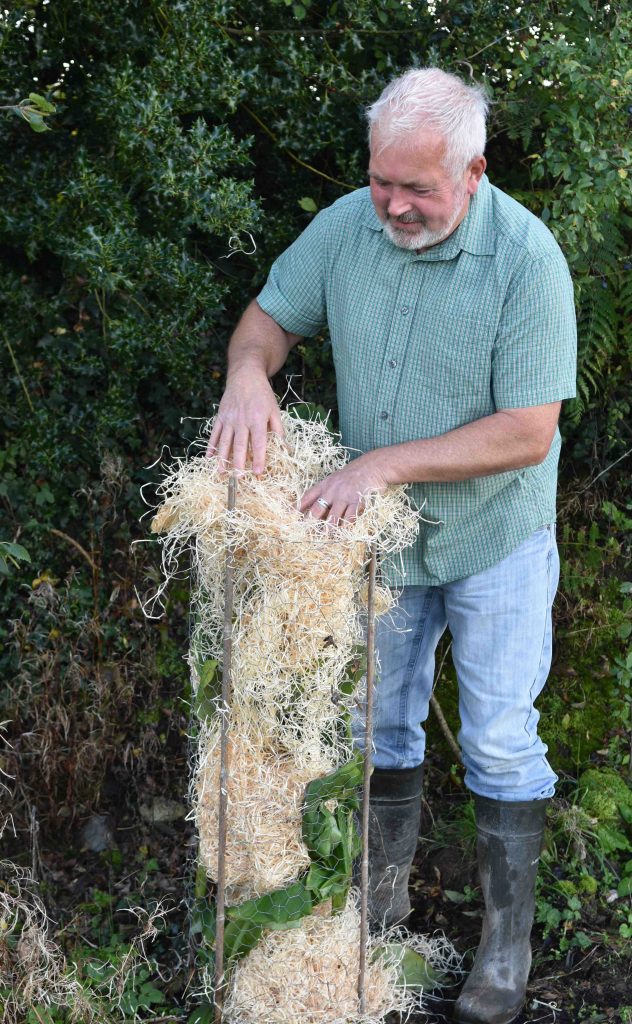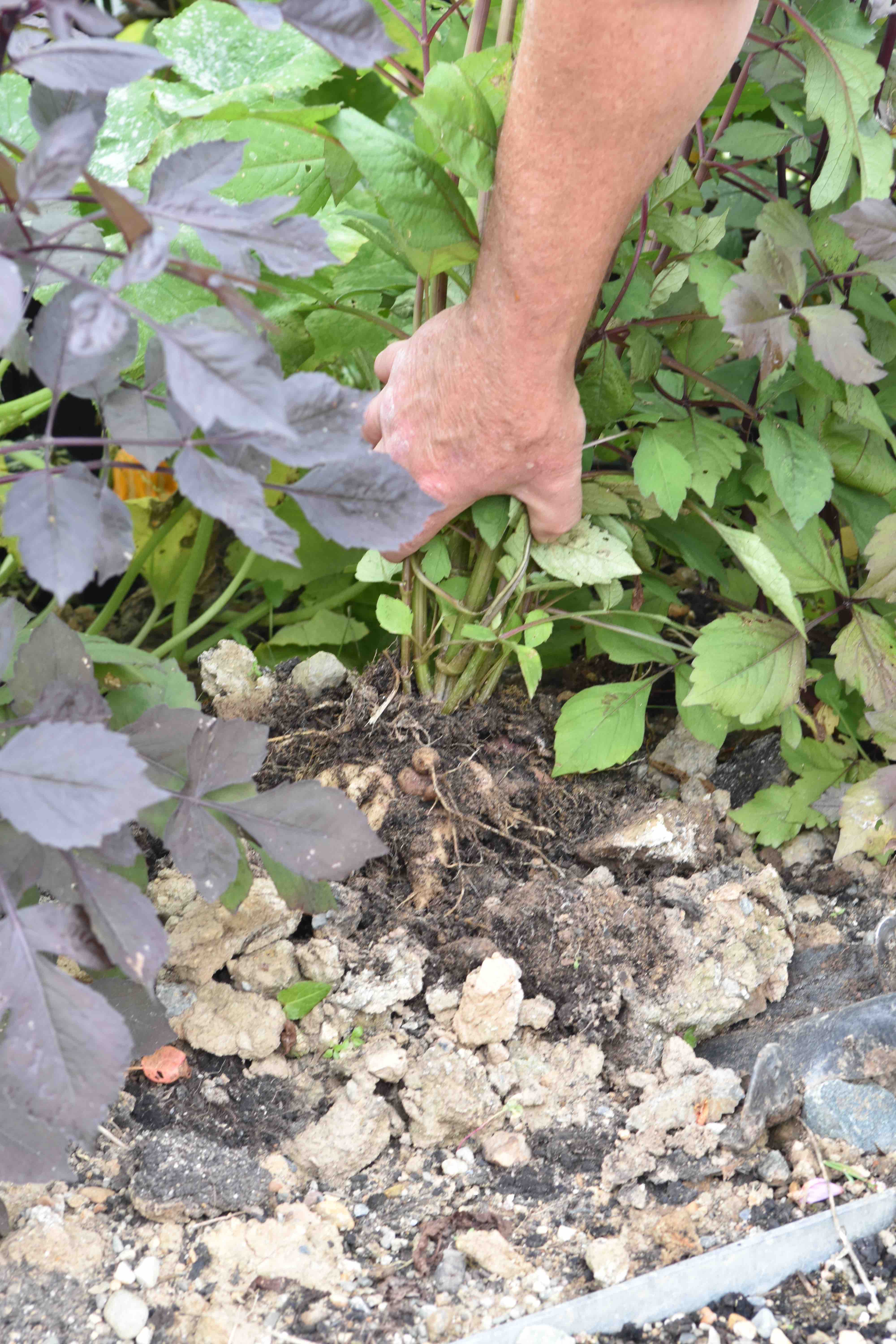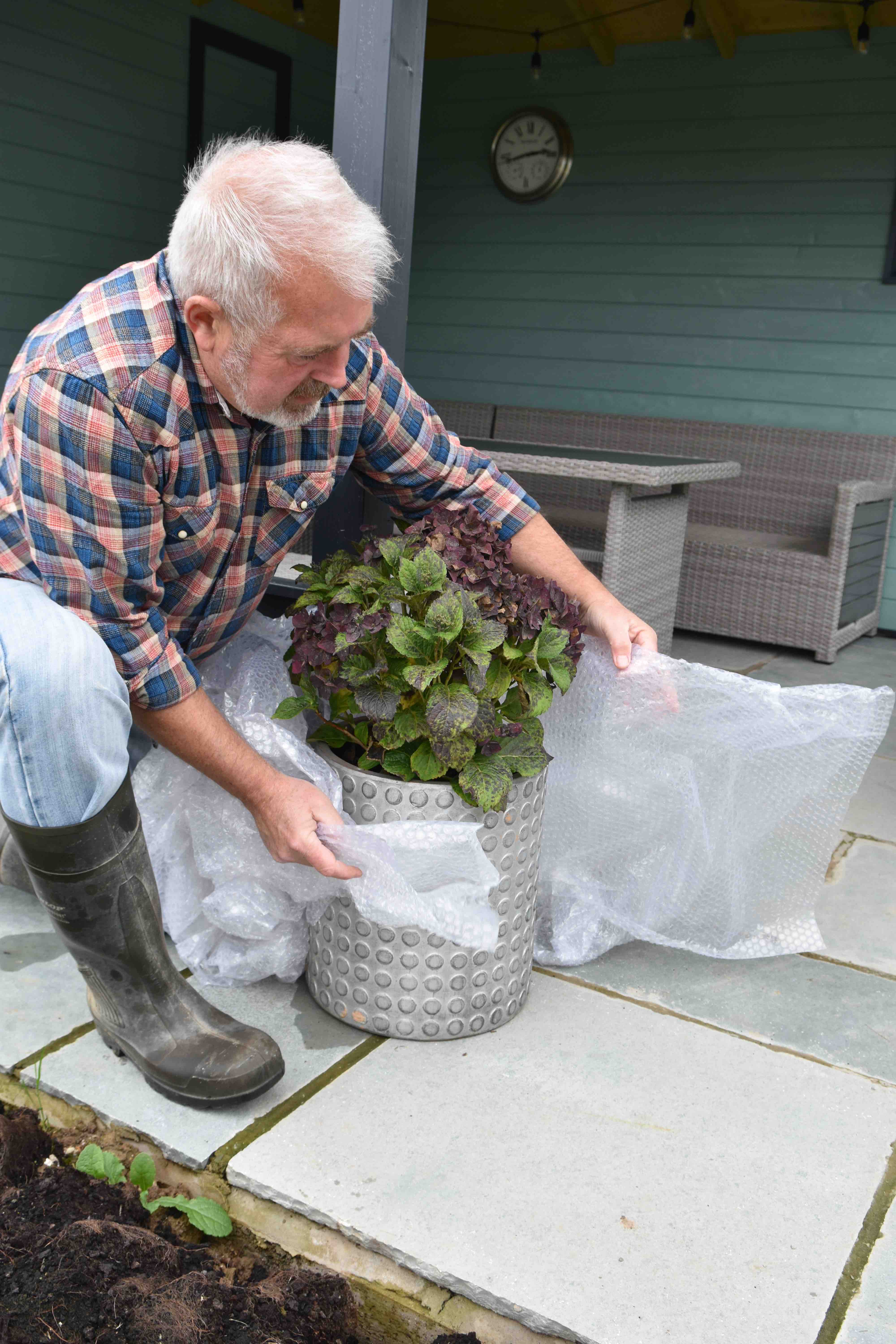We have been blessed with a mild autumn and I have been enjoying the display from the latest autumn flowers. Salvias, alstroemerias and the chrysanthemums have been blooming as though winter was never going to arrive but a series of hard frosts has brought me back to reality with a bump. At this time of year many gardeners are concerned about how to protect plants from cold so it seems a perfect topic to discuss this week.

Our garden plants vary enormously in how hardy they are and the situation is complicated by a range of factors including;
Soil, site and whether they are in pots or in the ground.
Light soils generally drain better than heavy clay and waterlogged plants generally suffer from winter cold more than those in dry spots.
Every garden has cold spots and sheltered areas. Areas overhung by trees are protected from radiation frosts. Areas near the house will be protected and areas at the bottom of the garden against hedges or walls will be ‘frost pockets’ where cold air drains down a slope.
Plants in pots are more vulnerable to winter cold than if growing in the border because cold can penetrate from the sides as well as the top. But at least they can be moved to a sheltered spot.
Of course, we have no way of knowing how cold winter will be and a short, very cold snap can do a lot of damage.
Dahlias and gladioli

The question here is whether or not to lift. In light soils, in an average winter, frost will not penetrate to the tubers/corms and the plants will survive. But dahlia shoots in spring are vulnerable to slugs and gladioli get crowded and you get a mass of leaves with few flowers. So I would lift at least every two years for the benefit of the plants as well as for winter protection. If you do lift them they must be kept dry and in a temperature of about 5c.
Cordylines
There was a time when we used to protect cordylines with hessian and fleece. We would tie up the leaves and wrap them to keep cold and wet from the crown but the problem was that if this was left on too long it ‘blanched’ the centre and when we untied them the yellow centres just fell apart. So either leave them alone or wrap loosely with fleece. A loose fleece cover is useful for all slightly tender shrubs. Never use plastic in any form which will cause sweating and mould. In addition, any protection should only be in place for the coldest periods. Too much covering will promote early, soft growth that will be killed in spring when you remove the protection.
Bananas
Bananas, in various forms, are increasingly popular. The only truly hardy banana is Musa basjoo. If frosted, it will be cut to the ground but will usually produce new stems from soil level in spring. To protect these, cut off the foliage and put a chicken wire tube around the stems and loosely pack with this with straw or wood straw. (above) Ensete, the Abyssinian banana is often sold as a banana but is not strictly so. It is not hardy. If in a pot it can be moved to a cool greenhouse. Keep it dry (ish) and expect the leaves to look awful till new growth in spring. You can also dig it up, shake off most soil, cut off the leaves and keep them, frost-free and almost dry, till spring when you can repot it.
Cannas are kept the same way. They can be left in the ground and often survive but they come into leaf so late in spring that they may not flower much next year.
Pots

Ordinary plants in pots are prone to frost damage – as are the pots unless plastic. You can protect both from freezing if you wrap them in bubble plastic. It will reduce the compost from freezing which is what usually cracks the pots.
Pruning
Foliage on the plant itself can protect lower growth from frost so don’t be in a hurry to prune off frosted shoots on penstemons, sage or fuchsias. The dead leaves may not be a cheerful sight but bear with it and don’t prune till March when you will find new growth appearing low down under the frosted tops.
Jobs for the week
It is not too late to plant tulips. Remember that bulbs are not like seeds and you can’t skip a season. It is getting late for other bulbs but if you have them then plant them. But there is no harm to plant tulips this late and I will be busy planting the last of mine this weekend.
Cut back herbaceous plants once they have died. Tidying the border now means less chance of treading on bulbs and new shoots.
If you are buying your Christmas tree, cut the cut end again and plunge the tree in water till you bring it indoors.